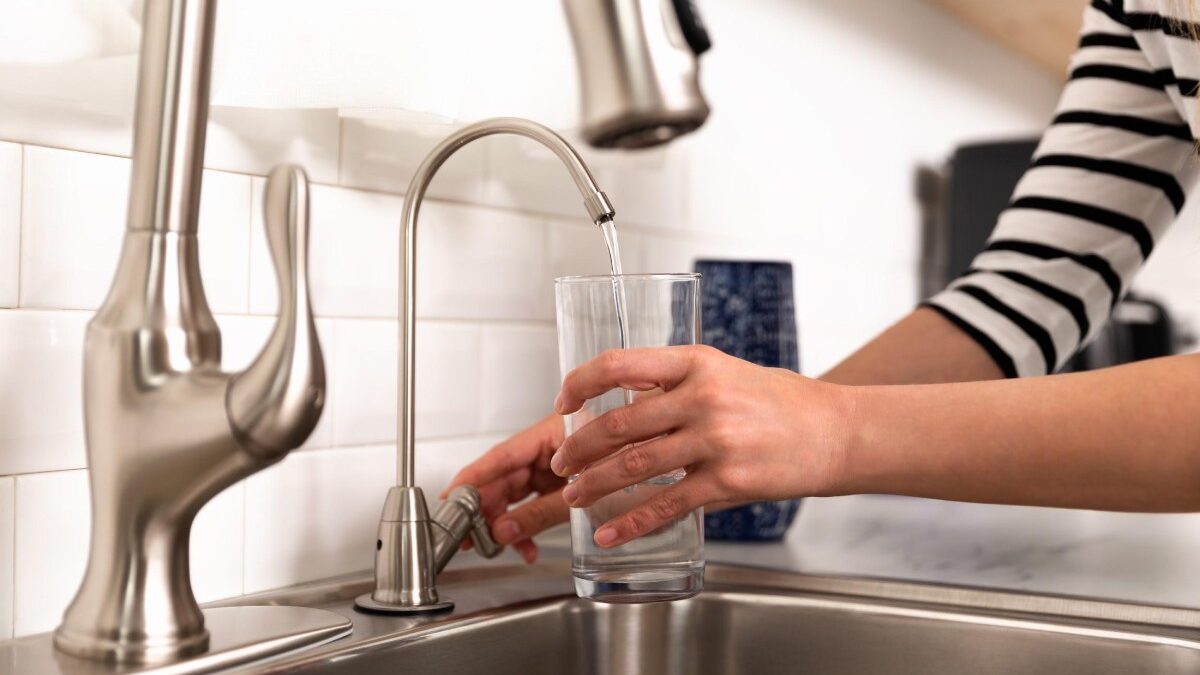Despite strict federal regulations and nationwide efforts to update aging water infrastructure, lead contamination continues to impact community water supplies across the U.S. In fact, Aquasana’s second annual Water Quality Survey revealed lead is the number one water contaminant concern among U.S. adults in 2020, and consumer confidence in city drinking water quality is on the decline year-over-year.
To help ease concerns, Aquasana is participating in National Lead Poisoning Prevention Week from Oct. 25 through Oct. 31, by sharing information that helps raise awareness about lead in drinking water and empowers people to protect their health and homes.
You may not be able to see, taste, or smell lead in the water you drink—but you can prevent the negative effects of lead poisoning by getting the facts and taking action.
Table of Contents
So, how does lead get into a home’s water supply?
Although municipalities across the country do their best to ensure local drinking water is clean and healthy, lead can be a particularly tricky contaminant to tackle. Lead commonly enters the drinking water supply on its way to your tap through a process called leaching. So while water in your city is likely lead-free, if it comes into contact with plumbing and pipes that contain lead as it travels to your home, your drinking water may become contaminated.
Problems with leaching are largely due to America’s aging water infrastructure. The use of lead-based pipes wasn’t banned in construction until 1986 so there are still many homes throughout the U.S. that utilize these outdated materials. That being said, the possibility of having lead-contaminated drinking water isn’t only a problem for homes built before 1986. Even if you live in a newer home, your drinking water may travel through older service lines and lead may still find its way to your tap.
How can I find out what is in my home’s water?
If you are concerned or curious about what may be in your home’s drinking water there are a few proactive steps you can take.
First, start by checking your city’s annual water quality report. Every city in the U.S. is required to distribute a water quality report, often called a Consumer Confidence Report, to its residents before July 1st of each year. These reports provide in-depth information about the quality of your drinking water including details about regulated contaminants that may be present. However, these reports are quite technical and can be complicated to understand. If you have questions about what is in your annual water quality report it can be helpful to contact your city for more information.
Another user-friendly way to find out what may be in your city’s drinking water is to check the Environmental Working Group’s Tap Water Database. This database has been around since 2012 and features water quality information for nearly 50,000 municipal water systems across the U.S. Simply visit the site, enter your zip code and you will find a wealth of easy-to-understand information about your city’s water quality, including a specific breakdown for lead.
Lastly, if you are on a private well or want to investigate your particular home’s water supply even further, you can have a sample of your water tested for common contaminants, including lead, by a private lab. This option does come with out-of-pocket expenses for the homeowner and requires waiting time for testing and results, but it offers a very thorough way to find out what is in your home’s water.
What can I do to keep lead out of my water?
Whether you’ve identified questionable contaminants in your home’s water supply or are seeking an extra layer of protection for your own peace of mind, one of the best ways to mitigate water concerns is to filter your drinking water. Two of the most effective filtration methods for reducing lead and other contaminants from water are reverse osmosis and ion exchange.
In short, reverse osmosis is the process by which a liquid is forced through a semi-porous membrane. This process removes particles larger than a water molecule like lead, fluoride, arsenic, cadmium, mercury, and asbestos. Ion exchange works more like a magnet, where ions are literally exchanged. In water filtration terms, this means using a potassium ion to bond to and grab heavy metal contaminants, such as lead, from drinking water.
At Aquasana, we offer water filtration devices that utilize both of these forms of filtration and are third-party certified for their lead removal capabilities. For example, the NSF-Certified Aquasana Reverse Osmosis System removes up to 99% of 88 different contaminants, including lead. This filtration option targets one source of water in your home and is most commonly installed on the kitchen sink.
If you’re looking to filter the water throughout your entire home, our IAPMO-Certified OptimH2O Whole House water filter utilizes ion-exchange and sub-micron filtration to reduce more than 99% of lead and cysts, 98% of PFOA/PFOS, plus tackles chlorine, chloramines and more.
Reducing your exposure to lead in drinking water
We invite you to join Aquasana in learning more about the effects of lead in drinking water and how to reduce your exposure to the harmful substance throughout National Lead Poisoning Prevention Week. The first step to reducing your risk of exposure to lead is education. Once you understand how lead may find its way into your home and how to confirm its presence you can take action to protect yourself and your family.
For more information and educational materials, please visit Aquasana’s Info Center, here.

